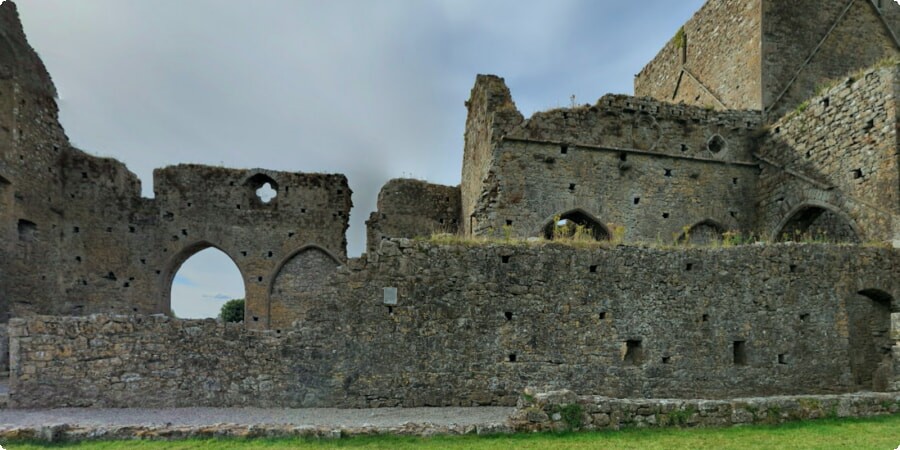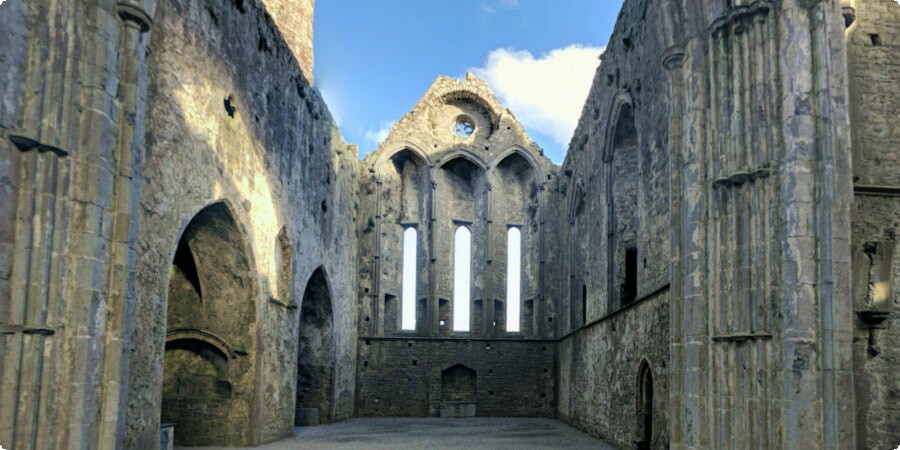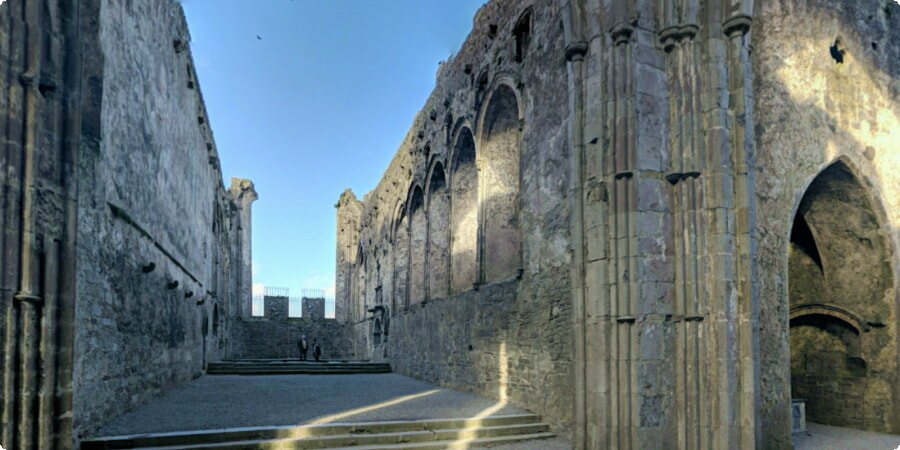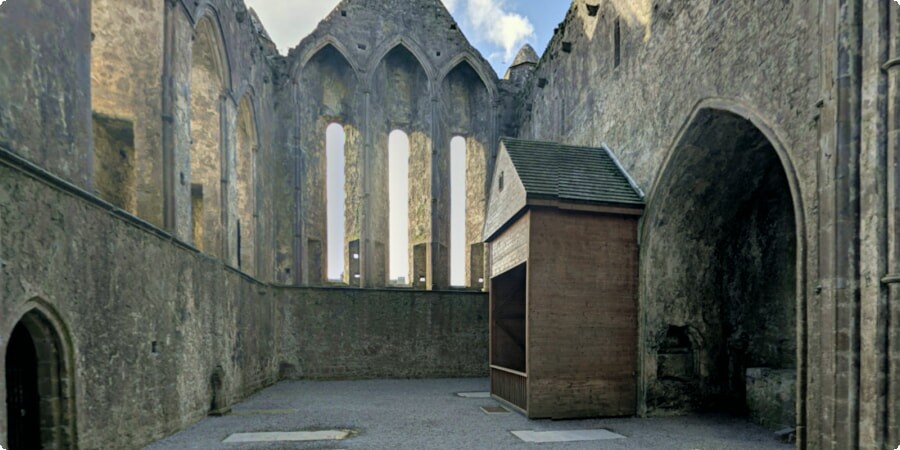Preserving History: Conservation Efforts at the Rock of Cashel
Nestled in the rolling green hills of County Tipperary, Ireland, the Rock of Cashel stands as a timeless sentinel of the country's rich history and cultural heritage. Perched atop a limestone outcrop, this iconic landmark has witnessed centuries of triumphs, tragedies, and transformations, earning its place as one of Ireland's most cherished treasures.
For generations, the Rock of Cashel has captivated visitors with its majestic presence and storied past. From ancient kings and saints to medieval monks and modern-day pilgrims, countless souls have been drawn to this sacred site, seeking solace, inspiration, and a connection to Ireland's vibrant past.
In this article, we will delve into the efforts undertaken to preserve the history and architectural splendor of the Rock of Cashel. From conservation initiatives to restoration projects, join us on a journey to discover the ongoing efforts to safeguard this cultural gem for future generations to cherish.
Historical Background
To understand the significance of the Rock of Cashel, one must delve into its rich tapestry of history and legend. The site's origins date back over a thousand years, with archaeological evidence suggesting human occupation since prehistoric times. However, it was during the early medieval period that the Rock of Cashel rose to prominence as a center of power and religious authority in Ireland.
Legend has it that the rock was gifted to Saint Patrick by the King of Munster in the 5th century, marking the beginning of its association with Christianity. Over the centuries, the Rock of Cashel became the seat of the Kings of Munster and a symbol of their sovereignty, as well as a hub of religious activity and pilgrimage.

By the 12th century, the site had become home to a grand cathedral, a royal castle, and numerous other ecclesiastical and secular buildings, earning it the nickname "Cashel of the Kings." Despite centuries of political upheaval and warfare, the Rock of Cashel endured as a testament to Ireland's enduring spirit and cultural resilience.
Learn more about the history of the Rock of Cashel on Wikipedia.
Architectural Features
One of the most striking aspects of the Rock of Cashel is its remarkable architectural ensemble, comprising a diverse array of medieval buildings and structures. From the soaring spires of Cormac's Chapel to the sturdy walls of the Round Tower, each edifice tells a story of craftsmanship, faith, and cultural exchange.
Cormac's Chapel, built in the 12th century, is renowned for its exquisite Romanesque architecture and richly decorated interior, featuring intricate carvings, vibrant frescoes, and ornate stonework. The chapel stands as a testament to the artistic achievements of Ireland's medieval craftsmen and the enduring legacy of Gaelic culture.
Adjacent to Cormac's Chapel, the Cathedral of St. Patrick stands as a majestic reminder of the Rock of Cashel's ecclesiastical importance. Despite centuries of neglect and decay, the cathedral's weathered walls and crumbling arches retain an air of grandeur and solemnity, evoking a sense of awe and reverence in all who behold them.
Explore the architectural features of the Rock of Cashel on Google Maps.
For travelers planning to explore the Rock of Cashel and its surrounding countryside, renting a car in Dublin Airport is a convenient option. With easy access to major highways and scenic routes, a car rental provides the flexibility and freedom to explore Ireland's cultural treasures at your own pace. Click here to book your car rental and embark on your Irish adventure.

Threats to Preservation
While the Rock of Cashel has stood the test of time for centuries, it is not immune to the threats posed by nature and human activity. Weathering, erosion, and pollution are among the primary challenges facing the preservation of this historic site. Ireland's unpredictable climate, characterized by frequent rain and harsh winds, can accelerate the deterioration of the rock's limestone surface and the delicate carvings adorning its buildings.
Additionally, the increasing number of visitors to the Rock of Cashel poses a threat to its preservation. Foot traffic and physical contact with the site's structures can cause wear and tear over time, while littering and vandalism can detract from the site's natural beauty and historical integrity. As such, there is a pressing need for sustainable tourism practices and conservation efforts to protect the Rock of Cashel for future generations to enjoy.
Conservation Efforts
To address the threats facing the Rock of Cashel, conservationists and heritage organizations have implemented various initiatives aimed at preserving its historical and architectural treasures. These efforts encompass a wide range of activities, including documentation, monitoring, maintenance, and restoration.
One such initiative is the ongoing conservation program led by the Office of Public Works (OPW), which oversees the management and upkeep of the Rock of Cashel. This comprehensive program includes regular inspections, structural assessments, and maintenance work to ensure the stability and longevity of the site's buildings and structures.
Furthermore, educational outreach programs and public awareness campaigns are instrumental in engaging visitors and local communities in the preservation of the Rock of Cashel. By raising awareness of the site's cultural significance and the importance of responsible tourism, these initiatives seek to foster a sense of stewardship and pride in Ireland's cultural heritage.

Restoration Projects
Despite the challenges posed by time and the elements, the Rock of Cashel has benefited from several restoration projects aimed at reviving its architectural splendor and historical grandeur. These projects involve meticulous research, careful planning, and skilled craftsmanship to authentically restore the site's buildings and structures to their former glory.
One notable restoration project is the ongoing conservation of Cormac's Chapel, a masterpiece of medieval architecture and a focal point of the Rock of Cashel. Led by a team of conservation experts and skilled artisans, this project aims to repair damage caused by weathering and neglect, stabilize the chapel's structure, and preserve its precious decorative elements for future generations.
For travelers eager to explore the Rock of Cashel and other historic sites in Ireland, renting a car is an ideal way to navigate the country's scenic countryside and discover its hidden treasures. With convenient access to major highways and rural roads, a car rental provides the freedom and flexibility to explore Ireland's rich cultural heritage at your own pace. Click here to book your car rental and embark on your journey to the Rock of Cashel and beyond.
Future Preservation Challenges
Looking ahead, the preservation of the Rock of Cashel faces ongoing challenges and opportunities. As visitor numbers continue to rise and climate change poses new threats to Ireland's cultural heritage, there is a pressing need for proactive conservation efforts and sustainable management strategies.
One of the key challenges is balancing the preservation of the Rock of Cashel's historical integrity with the demands of modern tourism. Finding ways to accommodate increasing visitor numbers while minimizing their impact on the site's fragile structures and ecosystems will be crucial to ensuring its long-term sustainability.
Furthermore, climate change presents new challenges for the preservation of the Rock of Cashel and other historic sites in Ireland. Rising temperatures, more frequent extreme weather events, and sea-level rise all pose risks to the site's physical integrity and cultural significance. Mitigating these risks will require innovative adaptation measures and investment in climate-resilient infrastructure.

Community Engagement and Education
Community engagement and education play a vital role in the preservation of the Rock of Cashel and its surrounding landscape. By involving local communities in conservation efforts and promoting awareness of the site's cultural significance, stakeholders can foster a sense of ownership and pride in Ireland's cultural heritage.
Educational programs, guided tours, and interpretive signage at the Rock of Cashel provide visitors with valuable insights into the site's history, architecture, and conservation challenges. These initiatives help to cultivate a deeper appreciation for the importance of preserving Ireland's cultural treasures for future generations.
Furthermore, partnerships between government agencies, heritage organizations, academic institutions, and local communities are essential for advancing conservation research, sharing best practices, and mobilizing resources to protect the Rock of Cashel and other historic sites across Ireland.
In conclusion, the Rock of Cashel stands as a timeless symbol of Ireland's rich history, cultural heritage, and architectural splendor. From its ancient origins to its ongoing conservation efforts, the Rock of Cashel continues to inspire awe and admiration in visitors from around the world.
As we look to the future, it is essential that we remain committed to preserving the Rock of Cashel and other historic sites for future generations to cherish. By embracing sustainable tourism practices, investing in conservation initiatives, and fostering community engagement, we can ensure that the legacy of the Rock of Cashel endures for centuries to come.
Whether you're a history enthusiast, architecture aficionado, or nature lover, a visit to the Rock of Cashel offers a glimpse into Ireland's rich cultural tapestry and a chance to connect with the spirit of the past. So, why not embark on your own journey to the Rock of Cashel and discover the magic of this iconic landmark for yourself?